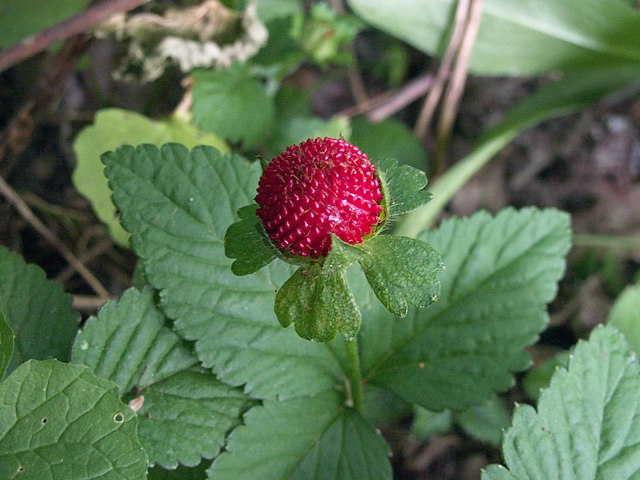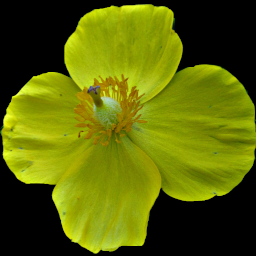
Also called Mock Strawberry. Ubiquitous in lawns, this little weed bears beautiful fruits that look delicious but taste like nothing. Father Pitt has taste-tested these fruits for you, so you will not have to bother. The flavor is not unpleasant, but not pleasant either. If you were starving and came on a lawn full of Indian Strawberries, you would not hesitate to eat more after you had tasted the first; but if you were not starving, you would find no reason to eat more after you had tasted the first.

In older references this species is Duchesnea indica; modern genetic research shows that it belongs in the genus Potentilla with the Cinquefoils. The common name “Indian” refers not to American Indians but to India, which is in the native range of these plants. Indian Strawberries came here as ornamentals, and they certainly do make an attractive groundcover. In our lawns they are harmless unless you are a grass fundamentalist.

Gray counts this species as Duchesnea; since the genus Duchesnea is now included in Potentilla, we give his description of that genus as well.
POTENTÍLLA L. CINQEFOIL. FIVE-FINGER. Calyx flat, deeply 5-cleft, with as many bractlets at the sinuses, thus appearing 10-cleft. Petals 5, usually roundish. Stamens many. Achenes many, collected in a head on the dry mostly pubescent or hairy receptacle; styles lateral or terminal, deciduous. Radicle superior. — Herbs, or rarely shrubs, with compound leaves, and solitary or cymose flowers; their parts rarely in fours. (Name a diminutive from potens, powerful, originally applied to P. Anserina, from its once reputed medicinal powers.)
DUCHESNEA Sin. INDIAN STRAWBERRY. Calyx 5-parted, the lobes alternating with much larger foliaceous spreading 3-toothed appendages. Petals 5, yellow. Receptacle in fruit spongy but not juicy. Flowers otherwise as in Fragaria. Perennial herb with leafy runners and 3-foliolate leaves similar to those of the true strawberries. (Dedicated to Antoine Nicolas Duchesne, an early monographer of Fragaria.)
D. indica (Andr.) Focke. Fruit red, insipid. (Fragaria Andr.) Waste ground, grassy places, etc., s. N. Y. and e. Pa. to Fla., Ark., and Mo. (Introd. from Eurasia.)

